– Welcome everyone to Wednesday Nite @ the Lab. I’m Tom Zinnen. I work here at the UW-Madison Biotechnology Center. I also work for the Division of Extension here at UW-Madison and on behalf of those folks and our other co-organizers, Wisconsin Public Television, Wisconsin Alumni Association, and the UW-Madison Science Alliance, thanks again for coming to Wednesday Nite @ the Lab. We do this every Wednesday night, 50 times a year. Tonight it’s my pleasure to introduce to you Peter Favreau. He works as a postdoc at the Morgridge Institute for Research. He was born in Jacksonville, Florida and graduated from high school in Ocean Springs, Mississippi. And then he went to the University of South Alabama for his undergraduate degree in physics. He stayed at the University of South Alabama to get his MS and PhD, both of those were in biophotonics.
He came to Madison in 2016 to be a postdoc in Professor Skala’s lab. He’s here to talk with us about Illuminating Better Cancer Treatments with Light. Now many of you know that the motto of our fair university here at UW-Madison is Numen Lumen, and that Googled translates directly as divine light. And I hope you will consider the divine as the verb because I think what he’s doing is divining how cells look and grow and different cells at different stages of cancer look and how we can use that to speed better cancer treatments. It’s not everyday I get to use a Latin phrase to introduce folks. It’s going to be interesting to hear what he has to say about this brand of Numen Lumen. Please join me in welcoming Peter Favreau to Wednesday Nite @ the Lab. (audience applauding)
– All right, the first test, can everybody hear me? All right, I passed the first test, so. (laughs) Thank you so much for having me here tonight. I’m real excited to talk to you guys about some of the really exciting work that’s going on just across the street over at the Morgridge Institute for Research.
Now, I have the distinct pleasure of actually having worked at the Morgridge Institute for Research now for a few years as a postdoctoral researcher. And it’s a beautiful building as you can see here. But in addition to just being a beautiful building it has an incredible set of researchers that work there on some really exciting science that’s going on. If you take a look inside, there’s always something going on inside of Morgridge, probably something to do with the community. There’s constantly some kind of outreach event, some scientific opportunity. Every time I walk in in the morning there’s always some new sign that says I need to walk all the way around the building because it’s currently blocked off because of this new conference that’s going on, so there’s always something going on. It’s always something very exciting, but one of the best parts about it is this philosophy that Morgridge goes by, which is practicing what’s called fearless science. And really what that means is that the researchers there are encouraged to pursue ideas that are potentially very difficult to maybe get funding for because there’s a high, they may not necessarily be the easiest experiments to follow through on. So, the whole idea here is to practice really cutting edge work and there’s all sorts of amazing researchers I get to work with on a daily basis. Now the one that I work in, the laboratory that I work in is the Optical Microscopy in Medicine Laboratory and the principal investigator there is Doctor Melissa Skala.
This picture’s actually pretty interesting because when I first came here in 2016 there were three or four of us, and as you can see there’s a few more than three or four now. So, the lab continues to grow. Pretty much every month it seems like we’re talking about someone else, so, it’s really exciting because we have all these new ideas and collaborations that we’re doing. And some of that I’m going to talk to you guys about tonight. So, with that, what does optical microscopy in medicine actually mean? What am I talking about? Well, to put it kind of simply, we’re talking about light, using microscopes, microscopy. This is a very expensive microscope that I’ll get into in a second that I use fairly often, it’s called a multiphoton microscope. And we use this to better treat patients, to improve patient outcomes and especially in cancer. And we want to basically improve precision in medicine. Now, what do I mean by precision? Well, there’s this paper that came out where they modeled a cancer growth as you can see here. This is a model of a tumor being grown, where different cell populations are colored differently.
They gave it a drug and what they found is if they modeled this cancer development, if there are some cells that are resistant to those drugs, the whole cancer will grow back again. And we’ve probably all heard about this before, right? You go immediately in for some kind of cancer therapy. Initially, your cancer goes into remission and then unfortunately later on it might come back. And this is because there are certain subpopulations of cells that are present in cancer that may be resistant to the drugs that we give them. So, what we need then, or to put this in another way, currently one of the most common methods of actually combating cancer is to use chemotherapy. And chemotherapy kills both cancer cells and healthy cells so it’s sort of like a sledgehammer when it comes to curing cancer. Now the perfect drug though doesn’t hurt your healthy cells of course, it just hurts the cancer cells. And what I just described a second ago was, most drugs that we give are going to end up potentially leaving behind resistant cells as well, so this is sort of the problem when it comes to treating cancer in patients. And it’s a very patient-specific problem. We have to find more precise treatments to help these patients.
So the challenges going forward and what our lab is particularly interested in, drug identification for cancers is costly and time-consuming. So a patient comes in, they may have a standard set of drugs that they can get but ultimately it can take time and it can be expensive to figure out exactly what the right drug cocktail might be for that patient. And there’s really no intuitive method for doing this at the outset. We’re getting better about this but we need some intuitive way of matching drugs. And not just drugs that are currently the standard of care drugs but potentially more targeted therapies that might offer even better results than the drugs that we currently know about. And finally, I mentioned this just a second ago, but these drug-resistant cell populations that remain after treatment, we have to find some way of destroying not just the cancer cells that are immediately going to be affected by the treatment we give them but all the cells. While also, of course, not hurting the cells that matter, the healthier cells. So these are the challenges then that really guide a lot of the work that goes on in the Optical Microscopy in Medicine lab and especially guides a lot of the work that I do. Now how do we address them then? That’s really what I’m going be talking about with you guys today. There’s sort of a three-pronged offensive that we undergo.
One of which is to use patient-derived samples, and I’ll kind of get into that in a second. We also use a contrast technique called fluorescence. And finally we use something called single-cell analysis, and I’ll describe what all of these mean eventually. But first, let’s just start with patient-derived samples. What do I mean by that? Well, traditionally if a patient comes in and they have a tumor or some kind of cancer, a physician might give them a set of drugs or have options available for that patient. And if they don’t know exactly what to give that patient, they may have to go through one at a time, and figure out and see if the cancer itself shrinks, and then they know it’s getting better. Of course, this can take time, and this is as I said, it’s one of the problems with finding a more precise treatment for these patients. Now, a better way, a potentially better way here is patient-derived tumors in a dish. And I’m just going to call them organoids from now on because tumors in a dish is kind of a mouthful to say constantly. So, what does that mean? Well, instead of trying all these drugs on a patient one at a time, we take parts of that patient’s tumor out and we regrow them in dishes.
And now whenever we want to try these drugs out we can actually try them on that patient’s individual tumors, basically, and instead of hurting the patient or sending them through this, we can get fairly quick results about whether or not this drug is going to work, one way or the other. This is just a couple of example images of what these guys look like. And one thing just to take away from this is that they vary pretty considerably. These are from two different patients. So the specific tumor and how they look are going to vary depending on the patient that comes and that kind of gets to the whole heart of one of these questions, which is every patient’s different, so they all require a different set of drugs to treat them. So treatment response is generally measured in these organoids by measuring a reduction in organoid diameter. So similar to how you would measure whether or not a treatment is working in the human body by measuring, let’s say, a CT or X-ray, a tumor shrinking. In the case of organoids, you would just wait and see if the organoids shrink. That’s a very common way of doing that. So before treatment you take some kind of measurement about their diameter and then after treatment you make that same measurement.
And you would assess whether or not the organoid itself is shrinking. If it is then you’re hopefully on the right track. Now one of the issues here is sometimes you get organoids that look like this, which I don’t know if you’re me, but I don’t know where to draw the line to figure out where the diameter is. And this is actually more common than you might think. And so it’s one of these kind of confounding problems, if we’re going to be talking about doing diameter reduction measurements in organoids. We have to find a better way of assessing whether or not a treatment is working that isn’t so dependent on them being spheres or circles that we can measure the diameter. So basically, is there an easier way to measure treatment response? And I’m here to tell you, yes there is. And that way in our lab that we use is fluorescence. So what is fluorescence? Well, fluorescence actually has its origins over 150 years ago from this guy. He’s a very famous guy, George G.
Stokes. In physics he did all sorts of amazing equations that I had to memorize and I sort of hate him (audience chuckling) but I also really admire all the different experimentation that he did. One of the experiments he was working with, he was sitting in a lab and he was working with, back in the day a lot of these researchers would basically just have minerals laying around that they had because they were doing all sorts of fun experiments with them and one in particular, fluorspar, he had laying around and he determined that under a certain color of light, wavelength of light, it would glow blue. And this is a phenomenon that had been witnessed by several researchers at the time but no one really knew what the deal is. How is this happening? Why is it happening? And George G. Stokes is responsible for figuring out what’s going on and then coining the term from the mineral that he noticed this in. He called it fluorescence. Not all molecules actually fluoresce of course. It’s just given the right conditions and the right chemical structures, some of these molecules will, and generally it’s a matter of how the organic structure of these molecules is and whether or not they have free energy available to actually fluoresce. So to go a little bit more into detail about that, if we consider, you have these orbitals and electrons, typically have energy states that they can move up in depending on whether or not they’re excited with some form of energy or light.
So if we call this very bottom energy state, the ground state, as zero, and this one over here at a little top, this is the excited state of an electron. If you have an electron and it’s excited by light, a certain wavelength of light, depending on the structure of that molecule, the electron will jump up into the excited state. It can’t hang out there forever. At some point it’s going to come back down, and in the process, it’ll emit a photon. And that emission of light is fluorescence. That’s what I’m going to be talking to you guys about later is what we are basically measuring is this emission of a photon. So as I said, fluorescence has been around since around 1856, in terms of our understanding of it, but since then it sort of exploded into a lot of different applications. In 1871, that’s when fluorescein was invented. That’s the first synthetic fluorescent molecule. If any of you guys have been to Chicago during Saint Patrick’s Day, they color the river green.
I didn’t know this, but they just threw a bunch of fluorescein in there. And I don’t think they actually use fluorescein anymore, it’s probably toxic or something. (audience chuckling) Yes, there we go, very toxic. So they do something else, but it used to be fluorescein is what they used. A few years later they invented some method of actually being able to look at microscopic organisms using fluorescence and they invented the first fluorescence microscope in 1904. And you can see it’s a very crude microscope design compared to what I showed you a second ago. But that’s when the first fluorescence microscope was invented. About 40 years later immunofluorescence came about. And immunofluorescence uses a combination of antibodies that are specifically tagged to proteins of interest to very specifically find contrast of those and identify them in living organisms. Now just a few years ago we finally found a way of manipulating the genetic code of organisms, especially jellyfish was where we first got this, but basically the researcher who found this, found jellyfish in Seattle, right, or Vancouver, and he identified the protein that was causing these jellyfish to glow, and he ended up being able to put that into other organisms.
Here in this image, you’re actually seeing bacteria that had been genetically encoded with different variants, of what’s called green fluorescent protein. Of course, they’re not all green here. Some of them are red, because depending on how you modify the structure, you can make different colors fluoresce. So this is a very bare-bones history of fluorescence, and just to tell you guys really that fluorescence gives us a lot of contrast to help us find answers in biology and medicine. Now that said, can fluorescence help us find the best cancer drug? I’ve given you guys this introduction, now let’s bring it all back to medicine. Well, in the 1950s, there was a researcher who was very interested in fluorescence in your cells, and that’s everyone in here, if you have the right wavelength of light on your cells, they would fluoresce, and he was looking into metabolism of cells, and this guy, Britton Chance, who’s actually a very fascinating character, I think he was an Olympian, gold medalist in sailing, and I think he also, I don’t want to speak too high, but he did a bunch of really exciting research in cellular metabolism. He identified some naturally-fluorescing molecules in cells. And basically, he was looking at mitochondria and what he found, if you look into– if you look at the processes that are going on, metabolic processes around the cell, in the cytoplasm, there’s glycolysis that produces energy, and of course, in the mitochondria, we have oxidative phosphorylation. And when he was doing these experiments, he was finding that there are two molecules in particular that, with the right wavelength of light, they would glow, they would fluoresce back. So he did a lot of experiments showing that he could actually manipulate the intensity of the light from these fluorophores, these fluorescent molecules, and showing that they’re actually from NADH and FAD.
And he also showed that depending on how the cells are metabolizing, this fluorescence will change, which is, of course, a really fascinating and strong contrast method because now I don’t have to put something into a cell and genetically encode something, I can just use the right wavelength of light and look at how metabolism changes, how things grow in cells using these two fluorescent molecules. Now another part of this, and so we have these two molecules where NADH fluoresces predominately in the cytoplasm and FAD fluoresces predominately in the mitochondria, and naturally you can take a ratio of the two and it kind of gives you a ballpark way of estimating how these cells are metabolizing. So we now call this the optical redox ratio, but there’s actually a few different variants of how to calculate this, but basically, by taking the fluorescence of the NADH divided by the fluorescence of FAD, you get, like I said, this kind of map of electron donors and acceptors that are present in the cell and really just how the cell is metabolizing. Our work has basically shown that this ratio, depending on if it’s lower or higher from an untreated sample in cancer, if it increases, the optical redox ratio increases, then we typically say that cell’s non-responsive to treatment. Whereas if it reduces, then it’s actually responsive to treatment. And I’ll get into a little more about what this means, but I just wanted to prime you guys with what these are going to mean. So the optical redox ratio, what does this actually look like in space? Well this is an image of just some cells that were acquired with the right excitation wavelength and emission wavelengths to see NADH fluorescence in cells. And what’s interesting here is these dark spots, or nuclei of these cells, and around that, where all the fluorescence is happening, is the cytoplasm, and of course, as I said, NADH is predominately fluorescing in the cytoplasm of cells. So you get this very specific contrast, spatial contrast for these different fluorophores. And additionally, with the right excitation wavelength, we can look at FAD fluorescence as well, and if we were to combine these two images together, we can get essentially this map of how these, the interplay between these two molecules, the intensity of light.
So if you’re looking at this, the brighter, more orange areas, there’s typically more NADH that’s fluorescing, and conversely, if it’s a little darker, or more towards the purple, there’s generally more FAD that’s fluorescing in that region as well. Now how do we actually acquire those images? Well, as I said, we use a very sophisticated microscope. It’s a little more sophisticated than the one in 1904. This is a multiphoton microscope, and this is predominately what we use. Why we use the multiphoton? There’s several reasons why we use it. Typically, for multiphoton microscopy, I know I say multiphoton but it’s helpful to compare it to what many researchers use right now, which is a confocal microscope. Confocal is also very excellent at exciting these molecules and looking at different cell structures, but by nature of using the confocal, you get a lot more dispersion of this light at the focal plane, and that focal plane is kind of this, let me see if I can get this mouse, right here. So yes, you’ll excite whatever you want to see, whatever molecule’s right here, but you also get all this, called out of focus exposure of this light which you, all that light is going to interfere with the signal that you want to see. Now you can generally improve that with confocal but multiphoton, by its very nature, is able to reject all of that light that’s outside of it. So that means that you only see where that little point of light is right here.
So if I’m scanning a sample, I can very specifically excite things, instead of getting out of focus excitement of different fluorescent molecules. So this is very powerful because of that, the specificity and rejection of the out of focus light that you get, but also, and I’ll get into this in just a second, it allows you to basically do very three-dimensional imaging by its very nature. So just to take you guys through a really quick study, we’re going to be talking about using fluorescence in organoids but I want to show you what that looks like, if I were to use fluorescence in organoids in kind of a trial study, where you’re interested in determining whether these targeted therapies could be used in colorectal cancer patients. So colorectal cancer, this is an area of research that I’ve spent a lot of my post-doctoral research working on. Unfortunately, colorectal cancer is a fairly prevalent cancer. There are 130,000 new cases in the United States alone, and then there are 45,000 new deaths as well. It’s a fairly prominent cancer and right now there’s a five-year survival rate of 65%. So of those patients who survive, or all the patients are going to receive some kind of, potentially could receive some kind of therapy to treat their disease, and that therapy may be effective but they also have to go through the process of actually dealing with potentially ineffective therapies. So some of these patients are going to receive a lot of toxicity from drugs that may not be as effective and they have to go through multiple rounds of chemo to eventually eradicate their disease. So there’s a need to, as I said before, find a more precise method of determining the best drug for these colorectal cancer patients.
So what I’m going to show you is organoids from two different patients, and I’m going to just, we will always have an untreated control and then we compare that to one of these targeted therapies called MLN0128. The numbers don’t matter, it’s one of the targeted therapies that targets cancer metabolism. And so does this other drug, ABT263. Collectively, we are interested in seeing how each of those drugs performed on the patient’s organoids by themselves and then we were also interested in how they would as a combination therapy be effective, which gets to one of these things is that we can basically try all sorts of combinations of drugs because we’re just testing it on this patient’s tumor outside of their body. So it allows us to do all sorts of drug screening techniques that we couldn’t have otherwise done. So we’ll regrow each of these patient’s tumors in dishes, and then using this microscope, we can image them for the fluorescence of NADH and FAD, and we can collect the optical redox ratio images from each of these. So, as I said, the untreated sample here, this is not treated with any kind of drug. This is just to show you what it compares to when we actually treat it with something. And when I look at this, what’s immediately apparent to me is just how different in shape they kind of look. You have smaller organoids in the top patient that are kind of clumped together, compared to the bottom patient’s organoids, which is kind of one big organoid that’s more spherical in nature.
And so the organization of both of these patients is very different. So definitely in just a qualitative way, you can see there’s a difference between these organoids. And then when we gave the treatment to these organoids, what you see is a dramatic difference also in how they respond to treatment, and, in fact, the top right one basically completely eradicated a lot of the outside organoids that are present, leaving only a few organoids remaining. And the bottom one didn’t, I’ll show you in a second what actually happened, but basically, this combination therapy also revealed quite a few interesting features about the two organoid patients. Now can we quantify differences between the treatments themselves? Well, what I’m going to show you guys is basically plots of how this looks after we treat them. So here are the untreated optical redox ratio results. Now anything that’s above this line is going to be something that’s not effective, it’s non-responsive to treatment, whereas anything below this line, this untreated line, is going to be effective at treating this cancer. So here you can see that all the drugs actually were below this line, but especially this combination therapy was extremely effective. The optical redox ratio was very much reduced compared to the control. So we call this a responsive organoid compared to, unfortunately, in this patient’s organoids where we saw basically no effect on this drug.
So unfortunately this patient was non-responsive to these therapies, or at least the organoids were non-responsive to these therapies. So as we can quantify this, we can get information about how the patient’s organoids are metabolically responding to these drug treatments, and we can do this across a wide variety of different treatments. But can we actually push this fluorescence contrast further? Can we go even deeper with the data and ask more questions about what’s going on metabolically? Well I talked to you guys about what fluorescence is in general, but there’s another element of contrast that we can actually get. If we were to time the point at which this electron is excited by light, to the point at which it gets back down to its ground state, this is something that’s called the fluorescence lifetime, and this is a very interesting contrast method because the fluorescence lifetime is very specific for each fluorescent molecule. NADH and FAD have their own fluorescent lifetimes compared to each other that are distinguishable. They’re also concentration-independent, so it doesn’t matter how much NADH is present, they have the same, the lifetime is consistent. As I said, they’re molecular-specific, but they also change, so the lifetime exists on a continuum and I’ll explain what that means here. NADH, if it’s bound to a protein, will move, its lifetime will actually get longer, whereas, if NADH is free, it has a shorter lifetime. And so this phenomenon, if it’s bound to something, it has a longer lifetime, if it’s free, the lifetimes are shorter, this can help us distinguish NADH versus FAD and also tell us whether or not, what the local environment consists of for NADH and FAD. Now how do we actually measure fluorescence lifetime? Well, in our lab, we use time-correlated single-photon counting, which is really a lot of words, it’s very hard to say, but what is this? What is time-correlated single-photon counting? Well, I’m going to do my best to explain it.
Basically, if we were to graph the counts versus time, and I’m just going to bring up this energy states again. We have this laser that pulses our sample and we have this initial excitation pulse that will excite the molecule or the electron up to an excited state. It’ll have a characteristic emission where a photon is emitted, and that photon is detected by, in our case, we use photomultiplier tubes, but you can use cameras as well, but basically we can use this to time the time it takes for it to be excited and then subsequently relax back down to its ground state. Now not every electron is going to experience the same time. They’ll come in at slightly different time points depending on basic quantum effects. So understanding how this works, these photons and how they’re actually received, I usually think of Connect 4, ’cause it’s basically how we’re going to end up building a histogram out of these photon counts. So if you think of each one of these columns as basically a bin where photons have a certain time it takes for them to get to the detector, some photons are going to come in at this time, others are going to come in later, and basically, over the course of about a minute, you’re going to get several different time points that you can use, or that build up. And you can actually fit something to this data, an equation to this data, and use that to inform you about the fluorescence lifetime characteristics of your images, or your sample. Now we do this on a per pixel basis, and what this basically means is that after we go through each one of these pixels, we can create an image and use that, as I said, I just showed you guys a kind of the same image, but we can get the fluorescence lifetime on a per pixel basis and use that to do even more quantification of our samples. Now how do we measure the lifetimes from this histogram? As I said, we can actually fit a biexponential fit to this data and understand how it’s binding, or how NADH and FAD are actually binding in this case.
And in the process, if I false color this, this kind of shows us what that looks like. So something that’s more blue in this image is more free NADH. Conversely, something’s that’s more orange or red is going to be more bound NADH. And as I said, this exists on a continuum, so there’s going to be some, depending on the binding partners, present that in each one of these cells, are going to have a slightly different lifetime for the NADH. So this is very interesting. I’m showing you guys 2-D images of basically a spatial map of the fluorescence lifetime for each one of these cells. But I mentioned earlier that the multiphoton microscope is great because it can actually go through a whole 3-D sample, which is really fascinating, but how do we actually do this? How do we incorporate this, then, into our organoid imaging, which are 3-D samples, right? Well, using our multiphoton microscope, we can take these fluorescence lifetime images one at a time through our sample, and these images are actually about 12 microns in depth difference, so basically we take an image, and then 12 microns above that, we take another image. 12 microns above that, we take another image. And then if we want to combine these images into a single 3-D image, we get something that looks like this. Which, I think, is just a really cool and interesting way of visualizing these 3-D structures.
Microscopy, if you don’t use this technique, if you were to use, just look at the diameter, remember how I originally looked at the diameter measurements and we were looking at this kind of crazy shape and asking, “Where can we actually draw the line for diameter?” Well, if we have the entire, the other problem with that is that there’s this whole, it’s kind of like an iceberg problem, that there’s the underside of that organoid might have its own shape as well that we can’t really see. So we need to use some method like a multiphoton microscope to actually see the entirety of the organoid. Using this allows us to actually visualize the entirety of the organoid. So then if we add the additional contrast from fluorescence lifetime, you kind of get these really beautiful images of both NADH in this case, but we can also do FAD. And what I want to draw your attention to is that they actually excite two very different parts. So you’re getting two different kind of contrasts from NADH and FAD. What’s really interesting in the FAD image, actually, unfortunately it looks like it stopped spinning, but as it was spinning, you might have noticed that there was sort of a blue core in some of these. And what that is, is the cells that aren’t receiving enough nutrients will actually start to collect in the center of these organoids and they’ll die, and we can see that using the FAD contrast better than we can see it with the NADH contrast. So you can see differences in metabolism at a glance by using this kind of approach. So then the challenges, the first two challenges, I think, we kind of address using organoids and fluorescence, namely that we can use those techniques to find better ways of identifying drugs, and we can also find better ways of matching those drugs to patients.
But I haven’t really spoken to this last point, which is finding a way to identify these drug-resistant cell populations that may exist, even after a patient undergoes some kind of treatment. So the typical way of taking an image like this, this is just another one of these fluorescence images, this is NADH fluorescence from an organoid, you can take the average intensity across this entire image and get some kind of a quantitative readout of what you’re looking at. But that doesn’t help you identify the individual cells and how they’re responding to treatment, which is really the question, right? How are each of the cells that comprise that organoid, how are they responding to the therapies that we’re trying out? That’s what we want to know. So our solution is to use single-cell analysis, is to go deeper into these images and try to tease out information on a per-cell basis and not just look at the whole volume of an organoid, or just one slice. We want to look at the individual cells that are in each one of those images. So how this works, we use some software that allows us to take an input image like this, and then segment the nuclei that are present there. So the red regions here are all nuclei, and then if we extrapolate out a few pixels, we can find an outline for each one of these cells and then, of course, the difference between where the cell outline is and the nuclear outline is everything in between, which is the cytoplasm. And of course, in the cytoplasm is the mitochondria and the cytoplasm where the NADH is present as well. So underneath where this region is, we can tease out all this fluorescent information and now we’re not talking about how does this whole image respond to treatment, how does the organoid that’s present here, we’re talking about how does this individual cell respond to treatment? And that gives us, the data that we get from that gives us population data, populations of cells that are present in each one of these images. So I’m going to bring you guys back to this Connect 4 analogy, ’cause I think it works well here too.
But how can we actually interpret these populations of cells that results from that? So if we again divide this up into columns, the optical redox ratio, if each one of these cells had a corresponding optical redox ratio measurement, one through seven, say, some of these cells are going to differ slightly in their metabolism so they’re going to have different optical redox ratio measurements. And if we were to look at this, we could actually fit some line over this, and what you’re seeing here is basically two populations of cells that center over either two or five. It’s just an example, but this is really what we see when we look at the data. And so if we have these two populations of cells that are present in a single image, we would call this a heterogeneous response. And what I’m really saying here is that some of these cells are going to have a higher redox ratio and some are going to have a lower redox ratio depending on the treatment that they get, so what we would really want to see, if you’re a patient and you’re looking at the individual cells that are present in an organoid, you would want to see something that looks like this. We just have one single population of cells that responds the same to the drug. Because if there’s a population of cells that’s responding differently than the other one, that means they might be resistant to that therapy, and you’d have to find some other targeted therapy to take them out. And so we would call this a homogeneous response to the drug therapy we’re talking about. Now what does this actually all look like in patients? So everything I’ve told you up to this point, we’ve done a considerable amount of experimentation and looking at, we get patient samples in, and we make organoids and then we try several different therapies, but what does this whole process look like if a patient walks into the doctor’s office and we run this entire process? Well, there was a study that actually just got accepted into the Clinical Cancer Research journal, where we prospectively, we attempted to prospectively identify the best treatment for a patient with metastatic colorectal cancer. So this patient, there was a surgical sample we received, and we tried a few different standard of care therapies.
So 5-fluorouracil is a standard of care therapy, 5FU for colorectal cancer, as is oxaliplatin, and we looked at the combination of the two and we tried these drugs on this patient’s organoids to see whether or not that patient would respond, or the patient’s organoids would respond. And so these are just some representative images that we got. So this is the untreated one. This is not treated with any kind of drug, and we looked at the lifetime as well as this optical redox ratio, and we compared this across all these different treatments. And I think the thing that jumps out to me immediately as I was looking at this is the FOLFOX, the 5FU plus the oxaliplatin, and what you can see, especially in the NADH lifetime, is that you have far more bound NADH and you have these dark, these blue cells that are surrounding it, and basically what’s happening is that these organoids are dying as a result of using this kind of treatment. So we were very excited about this, but we can’t just give a patient this based on what we saw. We wanted to compare it to another set of data. Now, before I jump into that actually, so we took the data, the quantitative results we got from that and as I showed you guys earlier, we wanted to look at the populations of cells that were present in here. So what you’re seeing here in white is the untreated control. And then what you’re seeing in red is the combination therapy that we gave, the 5FU plus the oxaliplatin.
And so this untreated, as I said, we’re only seeing one of these Gaussian curves, one of these distributions, and we call that homogeneous, but then with the treated, the 5FU plus oxaliplatin, we get this heterogeneous response. We have this one cell population that’s on sort of the lower right, that didn’t respond as well to the treatment, and then we have this large peak that did, this group of cells that did respond to treatment. So even though this is heterogeneous, this is actually great, because the patient actually, the organoids were responding in some form to treatment. And we wanted to confirm that this was also happening based on diameter measurements which is sort of the gold standard for looking at organoid treatment response at the time. So we compared this to the change in diameter and what we saw is this exact same peak present, and there’s two. They had this response that they saw, so we confirmed our results from the change in diameter that we got from our collaborators, and this patient, based on this data, was given this combination therapy and what I’m going to show you here is just this CEA marker which is just a common marker for cancer and basically they did a CT scan before the drug was given, and what that red arrow’s pointing to is their tumor, and then after being given the therapy, they started to see this marker of cancer just drop, and in fact, when they did a follow-up after two months, they saw that the tumor had dramatically shrunk after being given the treatment that our organoids had prospectively said were going to help this patient. So this is really exciting work because it shows that we can implement this in a patient scenario. Now of course there’s a long way to go before we could actually use this commonly, but these are the sorts of experiments that we’re really excited to jump into and find a way to do more of. So just to wrap this up, as I said, our lab is very interested in doing these kinds of experiments and finding ways to improve precision in medicine. I showed you colorectal cancer, but we are actually interested in a lot of different cancer types, not just colorectal cancer.
We’re looking at pancreatic cancer, which has just a devastating mortality rate. And there are just so few options for patients who have pancreatic cancer. There desperately needs to be a way of helping those patients find the best drug to treat their disease. Same with all of these. Breast cancer, oral cancer, neuroendocrine, and we’re constantly trying to find new approaches, because this approach of using fluorescence and organoids can extend to more than just colorectal cancer. It can extend to all these and others. So we’re excited to continue to reach out for collaborations at Morgridge and beyond in UW-Madison. And with that, I just want to thank the people in my lab, especially my PI, Doctor Melissa Skala, and several of the members in my lab who helped make this. Definitely the Deming lab, Dusty Deming over at the Carbone Cancer Institute did all of this patient collection, or patient sample collection, as well as a lot of the organoid training and growth. And especially thank you to all the patients that consented and allowed us to do these kinds of experiments.
So with that, thank you so much, I appreciate your time and your attention. (audience applauding)
Search University Place Episodes
Related Stories from PBS Wisconsin's Blog

Donate to sign up. Activate and sign in to Passport. It's that easy to help PBS Wisconsin serve your community through media that educates, inspires, and entertains.
Make your membership gift today
Only for new users: Activate Passport using your code or email address
Already a member?
Look up my account
Need some help? Go to FAQ or visit PBS Passport Help
Need help accessing PBS Wisconsin anywhere?

Online Access | Platform & Device Access | Cable or Satellite Access | Over-The-Air Access
Visit Access Guide
Need help accessing PBS Wisconsin anywhere?

Visit Our
Live TV Access Guide
Online AccessPlatform & Device Access
Cable or Satellite Access
Over-The-Air Access
Visit Access Guide
 Passport
Passport


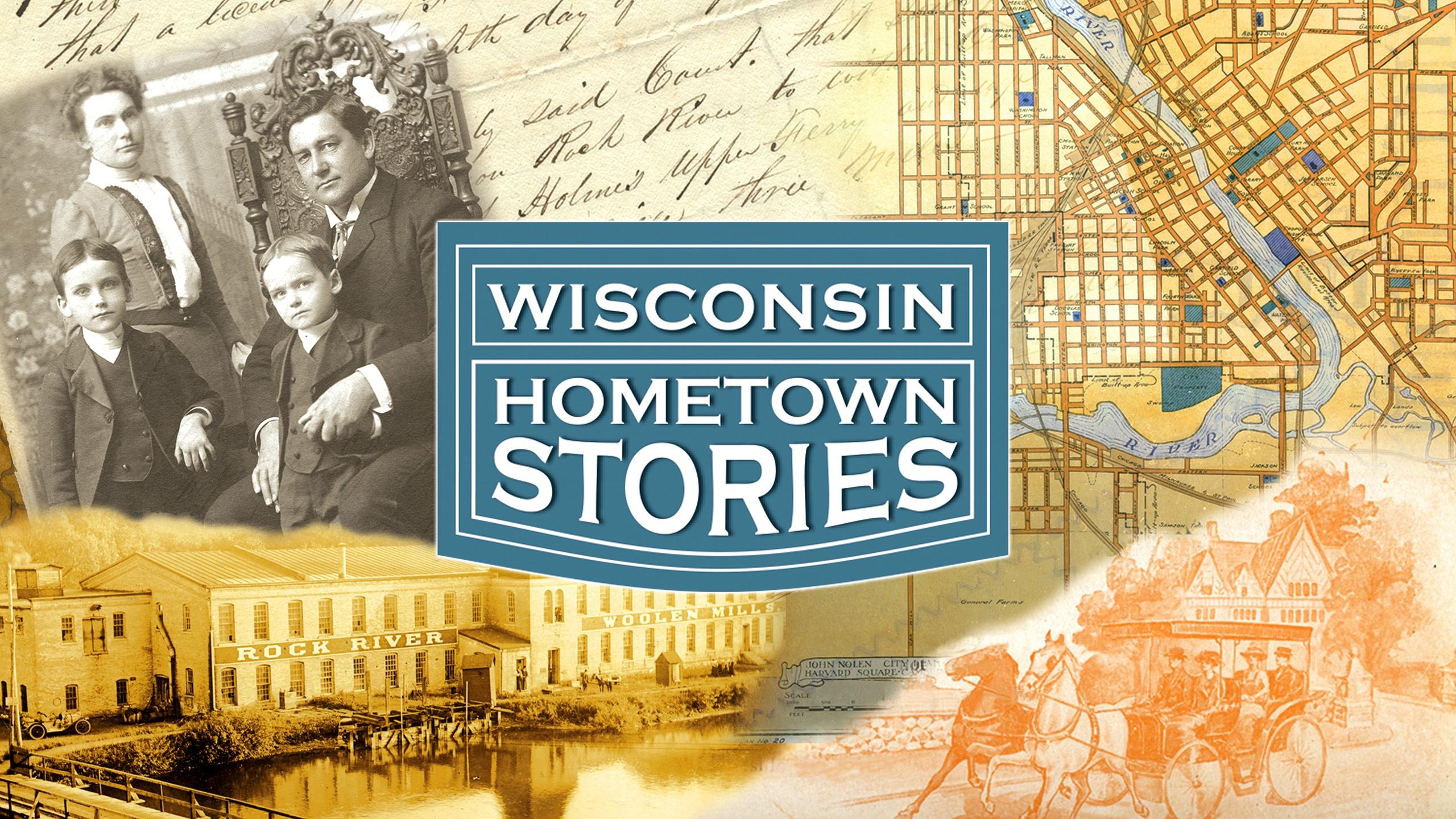




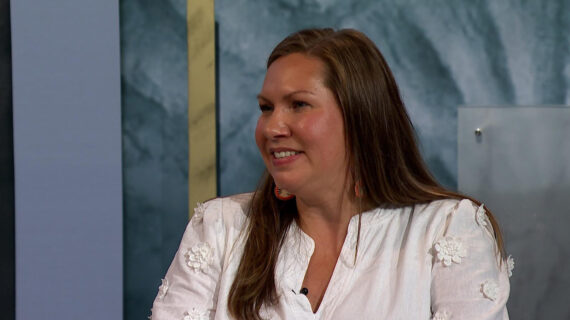
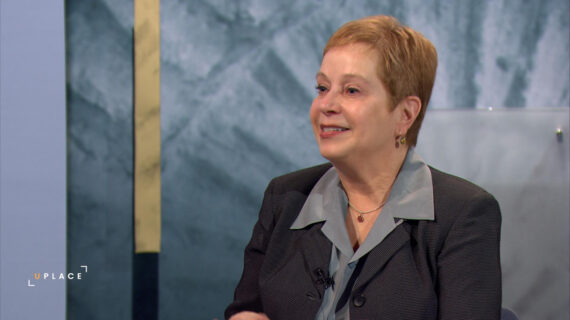
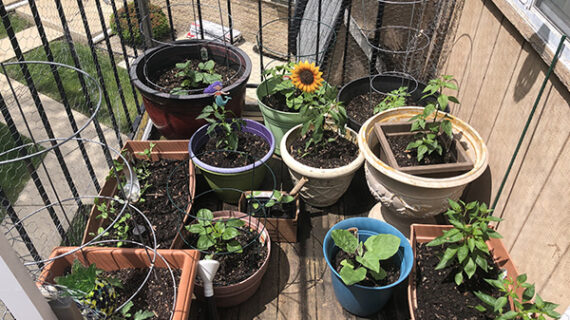
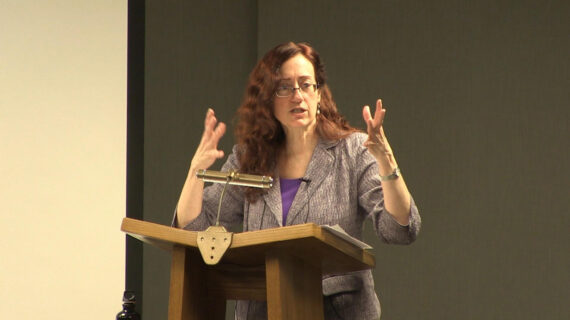



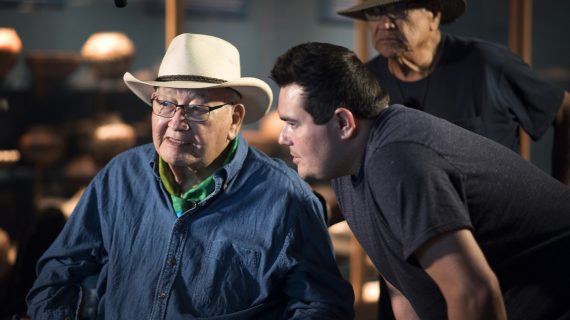



Follow Us